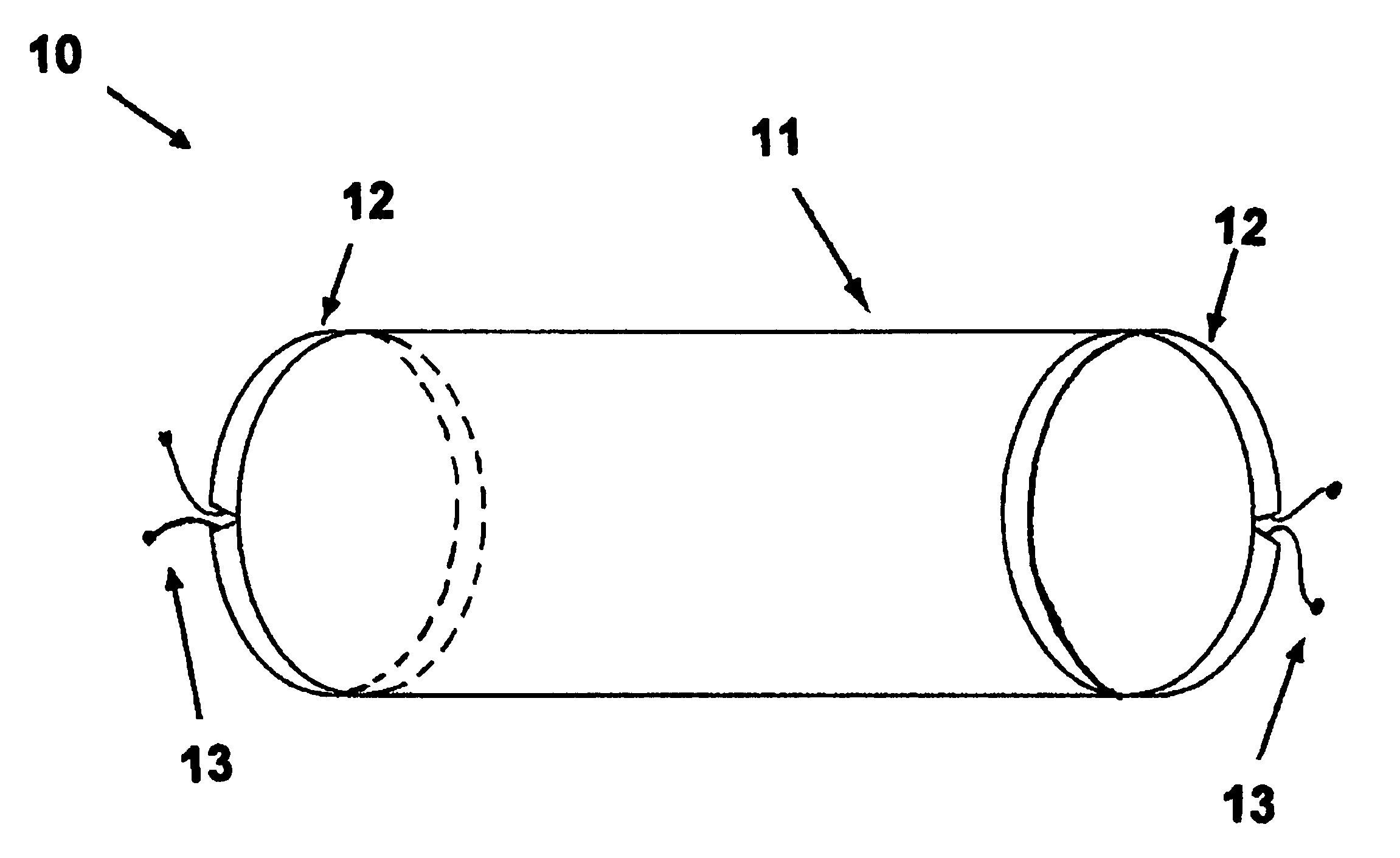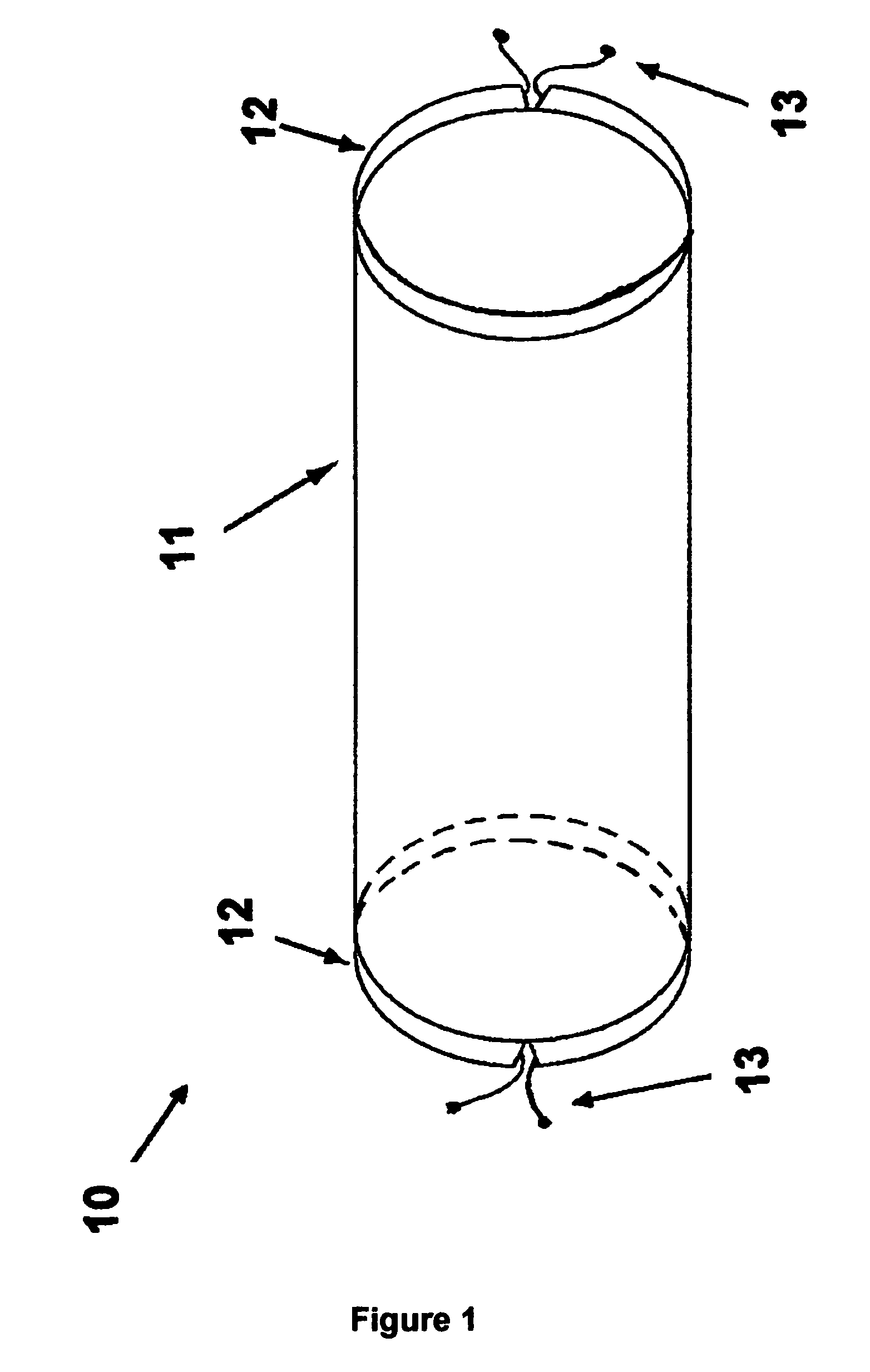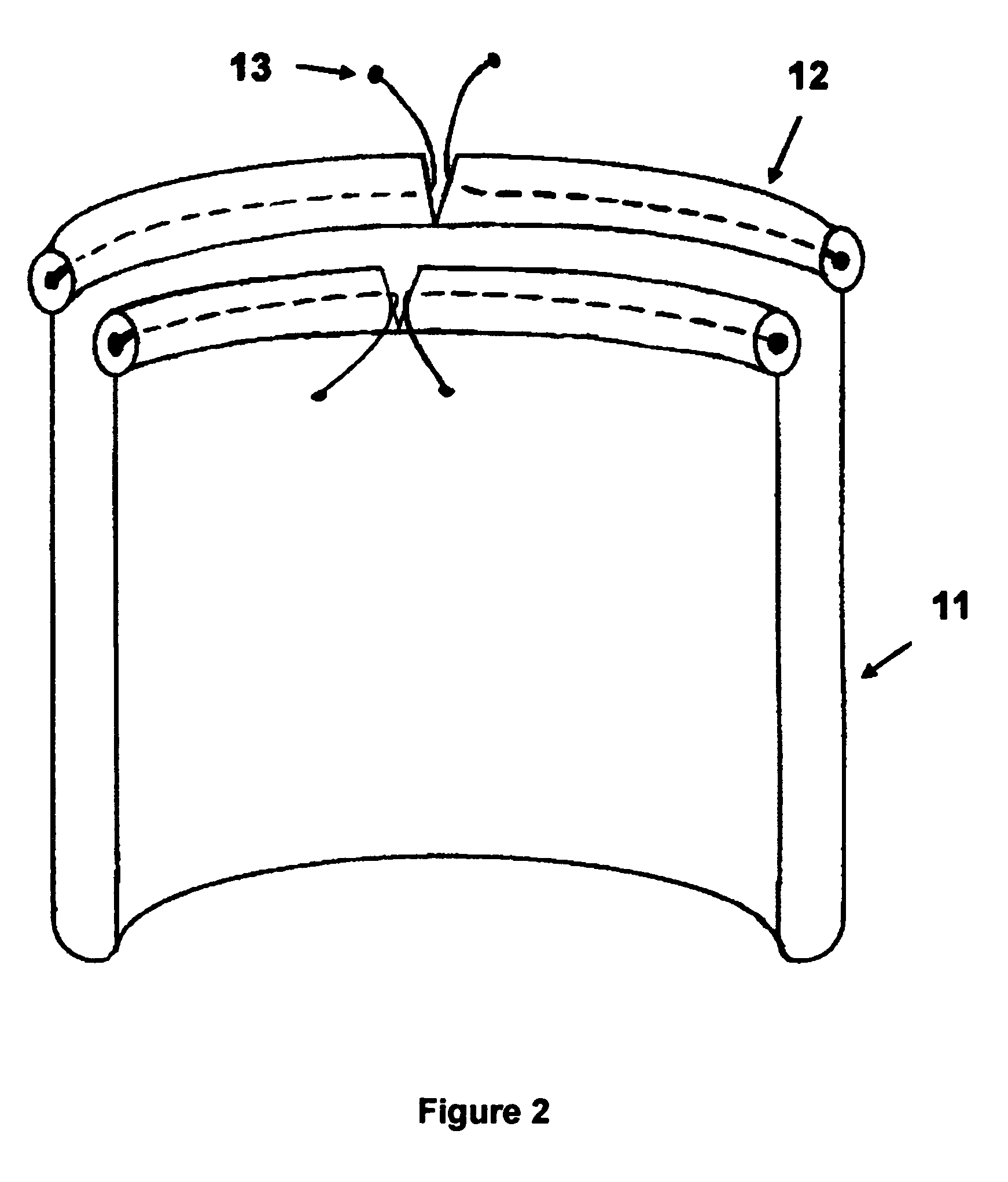Apparatus and method for washing fibers
a technology of apparatus and fibers, applied in the field of apparatus and methods for washing fibers, can solve the problems of inconvenient use, inconvenient washing of fibers, and difficulty in balancing load in the washing machine,
- Summary
- Abstract
- Description
- Claims
- Application Information
AI Technical Summary
Problems solved by technology
Method used
Image
Examples
example 1
[0028] A bag 10 was constructed of ultra fine polyester netting 11 about 1.4×1.9 m. The two 1.4 m edges are brought together and seamed about 1 cm. Encasing the open ends in a stronger fabric makes a cord channel 12. Applicant has found that colorfast double fold bias quilt binding is particularly suitable. The edge binding is cut 1.9 m long and hemmed under about 1 cm on each end. One is sewn over each raw edge of the open cylinder; the two hemmed edges of the binding meet, but do not overlap. Two flexible cords 13 (preferably nylon) are cut about 2 m long, the ends are optionally melted with a flame to prevent raveling, and then one is threaded through each channel of the binding. An overhand knot secures the meeting cord ends.
[0029] Many types of fine mesh material are suitable for constructing the bag. Several suitable mesh fabrics include 0.25-mm polyester “No-See-Um”, 0.8-mm mosquito netting, and 840×1680 Denier nylon leno mesh [all available from American Home & Habitat, Rou...
example 2
[0030] The inventive bag may be made in various sizes, but in any event will be generally larger than conventional laundry bags because it will be doubled upon itself in use as shown schematically in FIG. 2. The bag in the previous example when fully open was about 1.4 m long and about 2 m in circumference. As will be described in several of the following examples, the exact dimensions of the bag are not critical but are preferably of a convenient size for use in a selected top-loading washer. In most cases the bag will preferably be at least 1 m in length and less than about 2 m in length. If it is less than about 1 meter long, it will be too short after it is doubled up and the capacity of the bag will therefore be limited. If it is too long, it will be inconveniently long when the user removes it from the washing machine. The circumference of the bag is preferably larger than about 1 m and smaller than about 3 m. If the diameter is too small the capacity will be limited and if th...
example 3
[0032] One suitable cinching approach is to place eyelets at various points along the open edges of the bag. A cinching cord may be looped back and forth through these eyelets. The eyelets are preferably reinforced with edge binding to prevent them from being pulled out of the netting during lifting or other manipulations of the filled bag.
[0033] It will be appreciated that the drawstrings may be secured in various conventional ways, such as tying a knot or using small cord locks or other fasteners as are well known in the art. Because it is often desirable to use the drawstrings not only to cinch the openings closed but also to hang the bag for air drying, it is preferable that the drawstrings be sufficiently strong to support the bag and its contents when wet.
PUM
 Login to View More
Login to View More Abstract
Description
Claims
Application Information
 Login to View More
Login to View More - R&D
- Intellectual Property
- Life Sciences
- Materials
- Tech Scout
- Unparalleled Data Quality
- Higher Quality Content
- 60% Fewer Hallucinations
Browse by: Latest US Patents, China's latest patents, Technical Efficacy Thesaurus, Application Domain, Technology Topic, Popular Technical Reports.
© 2025 PatSnap. All rights reserved.Legal|Privacy policy|Modern Slavery Act Transparency Statement|Sitemap|About US| Contact US: help@patsnap.com



